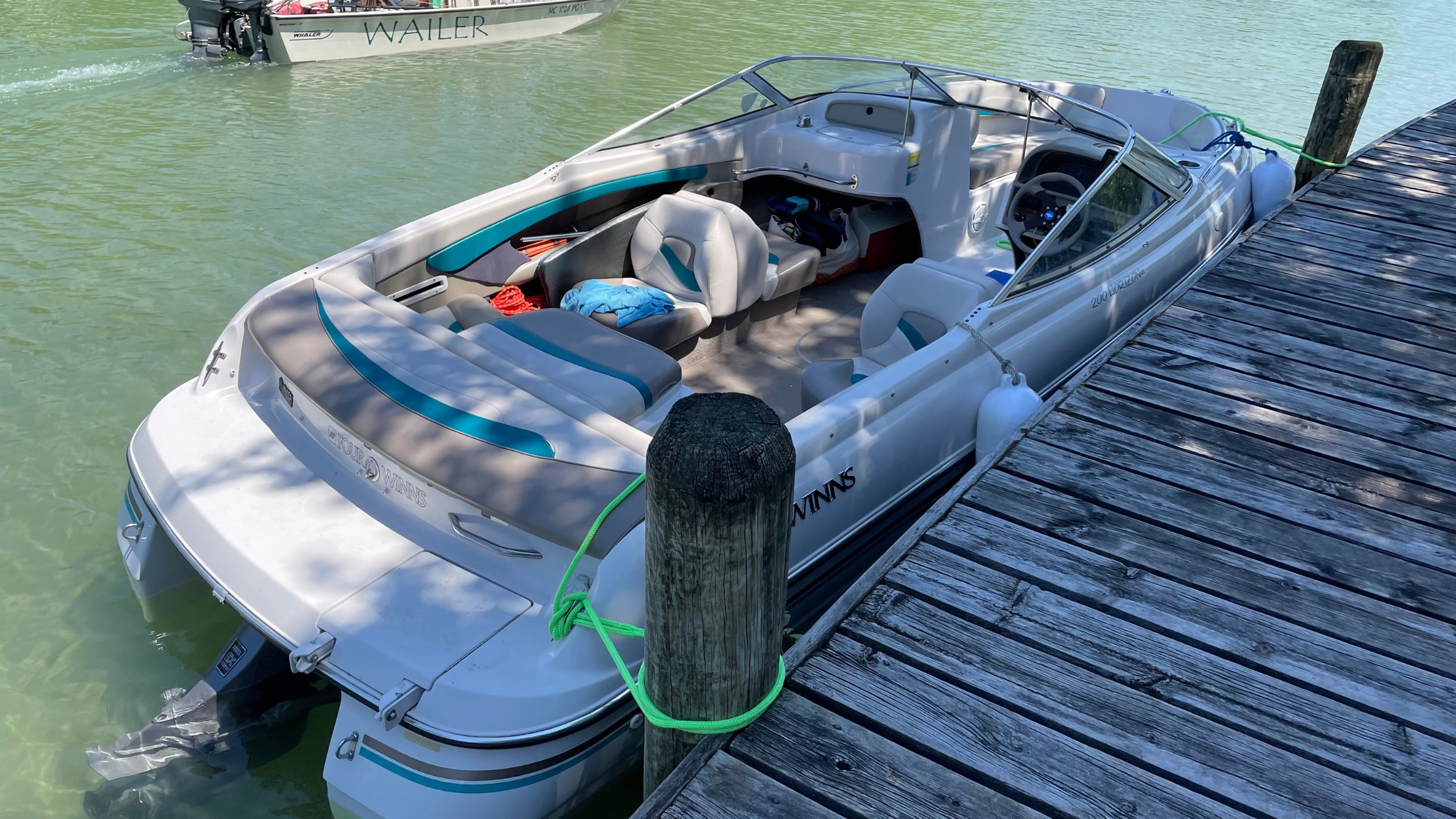One of the worst boating experiences of my life was when a peaceful weekend quickly became a legal nightmare because I tied my boat in the wrong place. Before setting off, you should always check for legal places to tie your boat to avoid making costly mistakes.
It is legal to tie up your boat to boating docks and mooring buoys. Depending on the local maritime laws, you may anchor your boat in areas where you will not obstruct other boats. White mooring buoys with a blue horizontal band are for anchoring, while lighted buoys are for navigation.
Marine laws vary from place to place, and you must be aware of the regulations before tying your boat. In this article, I’ll discuss what to look for when tying your boat.
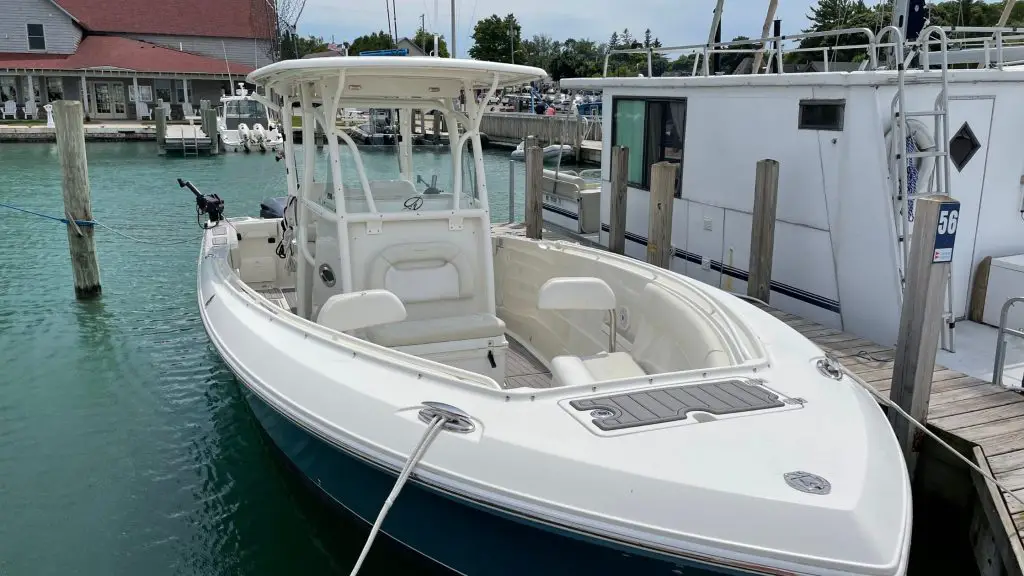
How To Tell Where You Should Tie Your Boat
For boaters, the freedom and joy of being on the water are unrivaled. However, just like with driving, there are boating rules that need to be followed. This includes where to or not to tie the boat.
Mooring Buoy
There are different types of buoys, all with different functions. If you are not keen, you can easily confuse the buoys and tie your boat on the wrong one. Buoys are made from PVC tubing and are generally brightly colored.
Unlike other buoys, the mooring buoy is quite heavy. It also has an anchor chained to the mooring buoy, which allows it to hold boats of different sizes.
You’ll find mooring buoys at marinas, docks, or dedicated areas at sea. The mooring buoy is often white with a blue band. In some places, the mooring buoy has an orange or yellow band instead of the blue band.
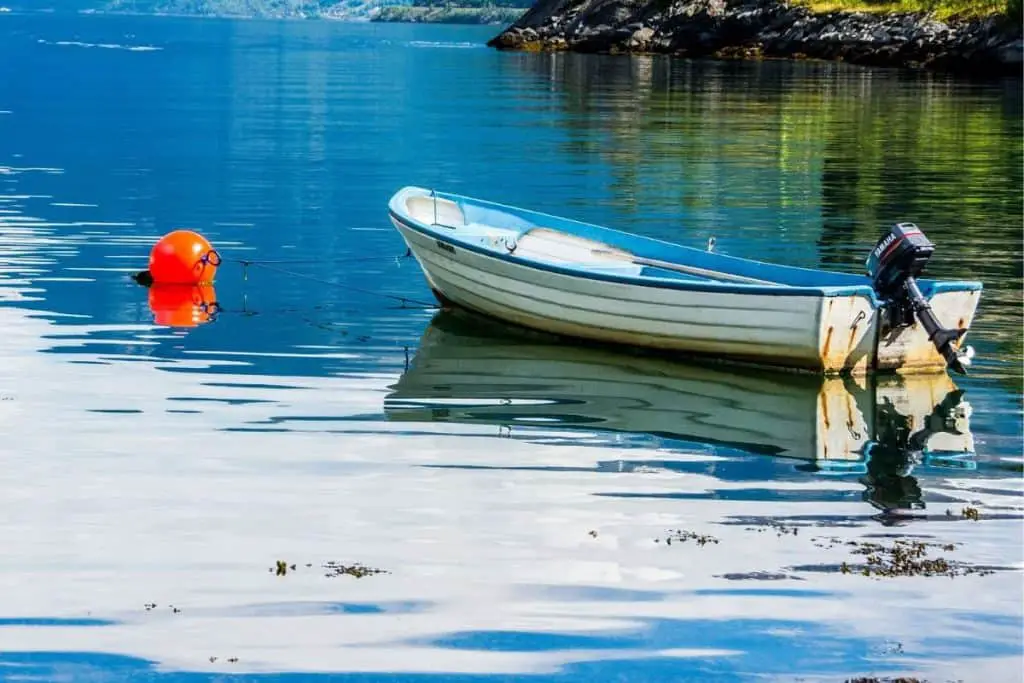
Here are the different types of buoys and how to tell them apart.
| Type Of Buoy | Colors | Function |
| Lateral buoys | Red with a pointed top. Flashes a red light at night. | Indicates to vessels the side to use when going upstream. Boats should keep to the left of the lateral buoy. |
| Port hand buoys | Green with odd numbers. | Mark the edge of the channel (left) |
| Starboard hand buoys | Green with even numbers. Flashes green light at night. | Mark the edge of the channel. (right) |
| Bifurcation buoys | Green with red band. Red with green band. | Mark the point where the channel splits into two. Shows the ideal channel for boats going upstream. |
| Fairway buoys | Vertical red and white stripes. | Indicates safe waters. |
| Isolated danger buoys | Black with a red horizontal band. | Shows hazard surrounded by navigable water. |
| Cardinal buoys | Black and yellow. | Indicates the safest or deepest part of the water. |
| Anchorage buoys. | Yellow with black symbols. | Marks the boundary of the anchorage area. |
| Mooring buoys. | White with a blue, yellow, or orange band. | Anchor points. |
| Cautionary buoys. | Yellow | Marks danger areas (military areas, underwater structures) |
| Hazard buoys. | White with an orange band or orange diamond symbol. | Indicates the area is rocky or has turbulent waters. |
Each of these buoys serves a specific function, so if you tie your boat illegally, you not only risk getting fined, but you may affect the movement of other boats in the area.
Mooring buoys are popular in some parts of the US, Australia, and Asia because, unlike traditional anchors, they protect marine life, including coral reefs. You’ll also find these buoys in marinas to cater to overflow boats that miss spots at the dock.
The Dock
The other legal area where you can tie your boat is the dock, which extends outwards into the ocean or any other body of water. Although it is legal to tie your boat to the dock, how you do it matters. It will be considered illegal if you do it improperly.
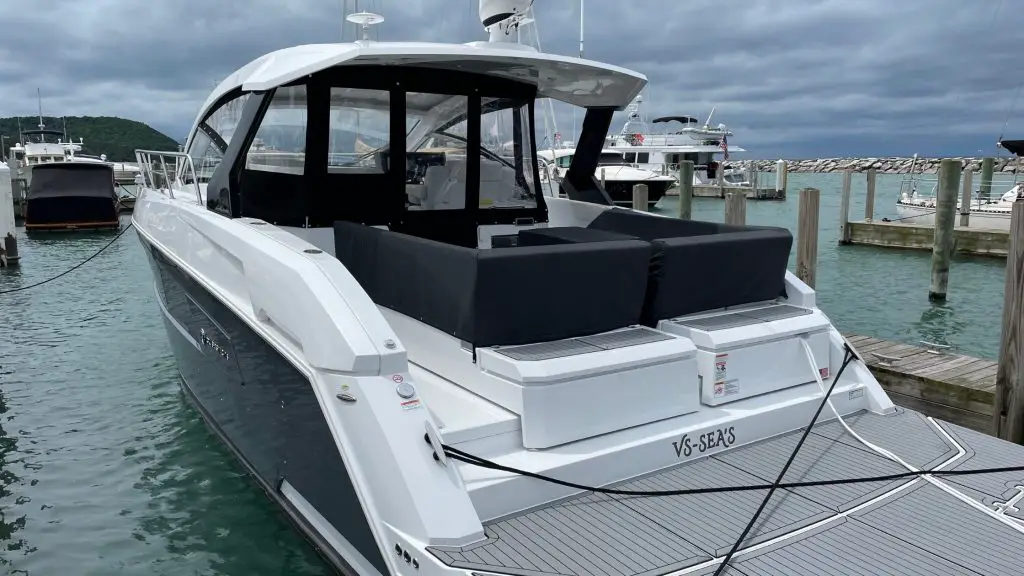
Additionally, your boat may be hit by another boat, or your boat may rub against the main dock, leaving you with expensive repairs.
Here’s how to dock your boat:
- Secure the breast lines close to the dock to keep the boat from drifting away.
- Use two docking lines, the bow, and stern. Ensure they are tied securely and are unlikely to cause someone to trip. The advantage of using the bow and stern lines is that the boat will not move from side to side.
- If you have a large boat, tie it using spring lines to oppose the bow and stern motions. This will help ensure it doesn’t smack against the dock as the tide moves in or out.
- Ensure the ties are not too tight. If they are, your boat could tip over when the tide goes out.
- Avoid loose ties. Loose ties can cause the boat to go under the dock and get stuck when the tide comes in. The boat may also drift out and get in the way of other boats.
You should keep track of the tide, how it is moving currently, and what is expected, especially when docking your boat for the night.
If the forecast shows the tide going out, make the tie a little loose so that the boat still has enough support when the water level goes down. Since the boat is only held up by the cleat, the boat could tip over. It could also rip off the cleat.
When tying your boat, the challenge is not just about how you do it but where you do it. I have discussed where to avoid anchoring your boat if you don’t want to risk getting stuck, losing your boat, or being fined.
These INNOCEDEAR Nylon Dock Lines (available on Amazon.com) are marine-grade ropes you can use when mooring your boat. They are double-braided, so they are ultra strong and don’t fray. They also resist mold, oil, salt, and UV rays.
They are 15 feet (4.6 meters) long and ½ inch (3.8cm) thick. They are unsuitable for boats over 35 feet (10.7 meters) long. The ends are heat-treated to prevent fraying and to ensure they can withstand heavy loads.
How To Moor Your Boat
The mooring buoy is usually out in the open water. They are especially common in areas where coral reefs are plenty, and there is the risk of traditional anchors destroying them. Once you identify a mooring buoy and are ready to use it as an anchor, you should do the following:
- Ensure you have a line or hook to attach to the mooring buoy.
- If there are other mooring buoys around, look at the size of the boats tied to them. Mooring boats are of different sizes. Some are ideal for small boats, while others work on large boats. The diameters are 12-30 inches (30.48-76.2 cm).
- Pull the boat close to the buoy. It would help to consider wind speed and tide when choosing the best angle to approach the mooring buoy.
- Look out for the pick-up line and hook on it.
- If the buoy doesn’t have a pick-up line, you’ll need to lasso a line. Hook it to the buoy and then make a note on the cleat.
- If you are stopping for a short while, you can reverse the boat such that the back is aligned to the buoy and then tie your boat.
This video is an illustration of how you can tie your boat to the mooring buoy.
You can also get your own mooring buoy. This Taylor Made Products Mooring Buoy (available on Amazon.com) is a seamless, one-piece polyethylene hard shell. It is filled with EPS foam, so it easily displaces water when you tie your boat to it.
It has a blue reflective band and a tube running through the center for the anchor chain. You’ll need to buy the buoy accessories separately.
How Long Should a Mooring Buoy Line Be?
Although you can legally tie your boat to the dock or mooring buoy, the length of the line varies. When using the dock, several factors, such as the tide and size of the boat, will determine the length of the line. The length of the line also matters when mooring your boat.
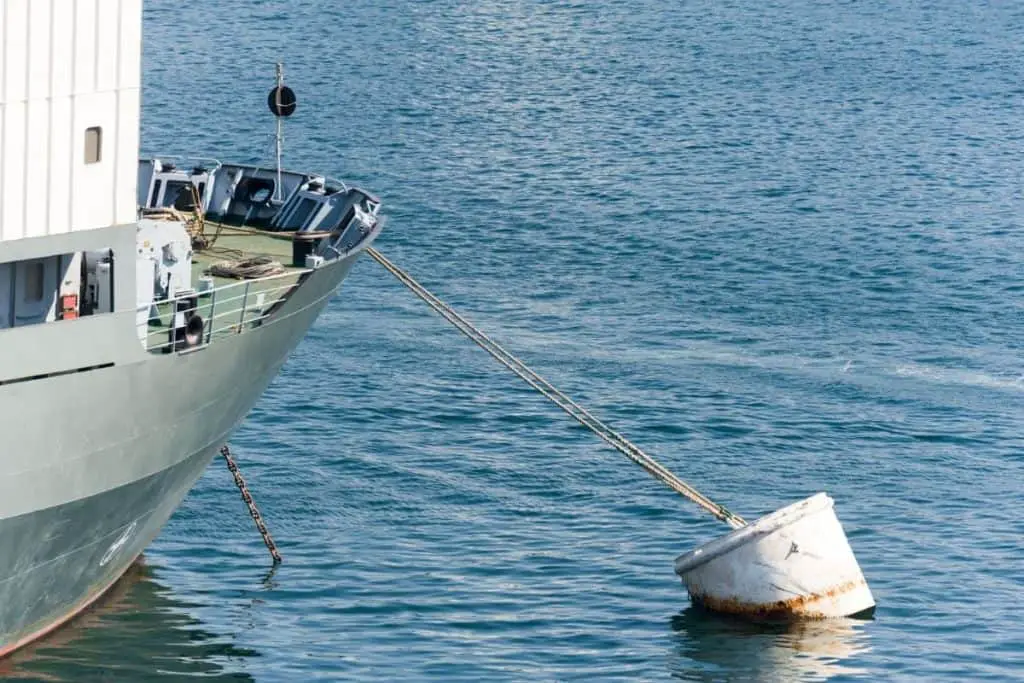
A mooring buoy line should be 1.5 to 2 times the boat’s length. The line’s length depends on your preference, but the minimum should be half the length of your boat. Get a shorter line if you want your boat close to the dock or a long line if you want to be further away.
You should have two or more mooring lines of different lengths. This way, you can use a shorter one when you need your boat close to the dock. A long line will also come in handy when the dock is crowded.
Conclusion
Owning a boat comes with responsibilities. Even when you rent a boat, you need to be aware of the do’s and don’ts, especially when looking for where to tie it. Buoys are quite popular, not just for anchoring the boats but also for guiding other boats.
Before going to sea:
- Check the colors used for mooring buoys.
- Observe what other boats are tied to, and seek confirmation that they are mooring buoys.
- If you are docking your boat, ensure you follow the regulations and secure your boat.
Project “Good Place To Tie Up” Boating
Check out our article on: What Is the Proper Technique for Anchoring (Important Anchoring Tips)

